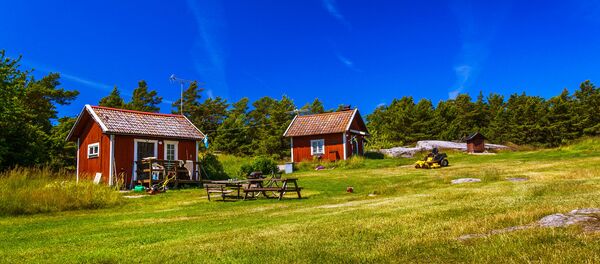However paradoxical it may sound, Sweden, one of Europe's most sparsely-populated countries, is suffering from an acute housing shortage, which has been aggravated by the recent years' migrant crisis. To accommodate tens of thousands of "new Swedes," the Swedish government plans to found nine new cities in an unparalleled construction campaign.
In 2016, Sweden's population rose by almost 1.5 percent, exceeding the symbolic 10 million mark and making it the largest population increase across the EU after only Luxembourg. That year, Sweden's population rose by 144,000 inhabitants, the main reason being immigration.
Last week, Housing Minister Peter Eriksson of the Green Party presented nine areas in six municipalities, which were selected for the construction of sustainable urban areas and cities.
"All in all, it's about 100,000 new homes," Peter Eriksson said, as quoted by the Swedish daily Expressen. "The idea is that the state should be able to remedy maintenance obstacles by developing new infrastructure. It is about new railway tracks, stations and support for innovations," Eriksson added, referring to two new railways in the city of Uppsala as an example.
Meanwhile, the idea of infrastructural expansion was earlier this year presented by Göran Cars, a professor in urban planning at the Royal Institute of Technology (KTH), who argued that the congestion of urban areas has likely reached its peak and advocated investing in "brand-new city formations."
"After all, we have not built a new city in Sweden for a hundred years," Göran Cars told Swedish Radio earlier this year.
Perhaps the most striking feature of the plan is to create "mixed" neighborhoods with different types of housing and keep the rent down for better integration.
This triggered the skepticism of many experts and social media users, who drew suggestive parallels with the notorious Miljonprogrammet ("Million Program"), which was an ambitious housing project that ran between 1965-75. As the name suggests, over a million new homes were built in the course of the Million Program to lodge the lowest-income groups and the rural population flooding the cities. The Million Program has since been blamed for the emergence of blighted areas in major cities.
Here we go again. Miljonprogrammets alla misstag upprepas. Funktionsseparerade sovstäder, vad är hållbart med det?https://t.co/cNQdr6aK76
— LarsAndersJohansson (@Budoarstamning) 2 сентября 2017 г.
This time, "new Swedes" are likely to become the primary inhabitants of future cities. In 2016 alone, 70,000 asylum-seekers were grated residence permits in Sweden and became eligible to receive homes in Swedish municipalities, with the demand peaking in the Stockholm metropolitan area.
#Nyfiken fråga: med tanke på att det var @socialdemokrat som antog #miljonprogrammet så borde de väl inte få klaga på integrationsproblem? pic.twitter.com/GXPhGwCKJI
— Nyfiken fråga (@nyfikenfraga) 11 февраля 2017 г.
Meanwhile, Stockholm's notoriously long queue for rent-controlled housing is a candidate for the Guinness Book of World Records. It takes an average of nine years to be granted a rent-controlled property, with the waiting period reaching as much as two decades in some of the most popular neighborhoods. Incidentally, Sweden was identified as Europe's most expensive country for construction by the economic daily Dagens Industri.
Malmvägen #miljonprogrammet #sollentuna http://t.co/7uTqLTdT1w pic.twitter.com/qSESu2bY8m
— Johan Jeppsson (@citykvitter) 21 сентября 2015 г.
As of now, Säffle and Oxelösund, which were granted urban rights in 1951, are Sweden's youngest towns.






